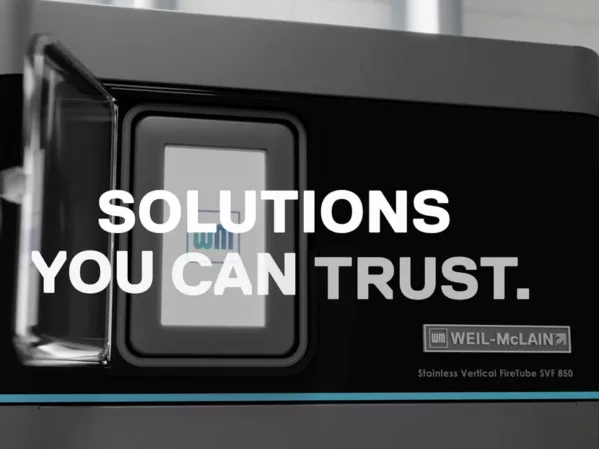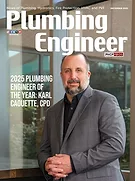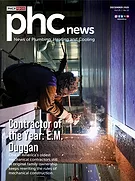We’ve all read about the drought in California and he steps that have been taken to conserve water. In November 2014, Governor Jerry Brown won approval for a $7.5 billion bond measure that would pay for much needed water projects in the State of California. In March, he signed a bill that would send $1 billion in emergency funds to drought relief projects. In April, he mandated a 25 percent reduction in urban water use.
What you have not yet read is that on October 14, 2014, long before these measures, the Mayor of Los Angeles, Eric Garcetti, issued Executive Directive #5, instructing the Department of Building and Safety to compile and propose to City Council a list of potential building code changes for new and retrofitted buildings. The crisis is so great, and the task is so daunting, that they decided to call on the most formidable opponent known to urban water waste: the Plumbing Engineer.
The proposed code revision was drafted by a small committee headed by Osama Younan, the Chief of Green Building, Electrical and Mechanical Engineering Division at the Los Angeles Department of Building and Safety. The committee included representatives from the util- ity company, cooling tower and faucet manufacturers, building management groups, developers, contractors and engineers. Some of these are enhancements to current practices, such as decreasing the flow rate of fixtures and increasing the cycles of concentration in cooling towers. Others are radical new requirements that make build- ings ready for future onsite treatment and reuse, a giant step towards self-sustainability. Engineers outside of Los Angeles could make use of the practices being imple- mented here, for they will surely spur the standards and technology that will soon spread to the rest of the country. The following is a summary of the needs, discussions and requirements of this 10-part plan.
Step one
Hot water circulation is now required in residential and non-residential buildings and dead legs are limited to 0.6 gallons, about 24 feet of ¾-inch pipe. Solutions include heat trace cable and pumps with timers, tem- perature sensors, occupancy sensors and more elaborate smart systems. Compact systems serving nearby fixtures with piping that meets the 2013 California Energy Code Residential Appendix are exempt, as are multi-family buildings where each unit is sub-metered and served by a common central hot water heating system. The latter was necessary to overcome the challenges of circulating through multiple sub meters; it was decided that metering would be more effective at conserving water than circulating.
Step two
Further reductions in flow rates are now imposed on plumbing fixtures. The goal is an overall reduction of 20 percent from the water use baseline. Here, there was much discussion. Toilets at 1.28 gallons per flush are already under scrutiny from drain line carry studies that show insufficient water to carry solid material. Without a regu- lar flushing of water from other fixtures, waterless urinals have demonstrated a build-up of salts in the waste line.
Ultimately, it was decided that the prescriptive method, available to alterations and small new construction proj- ects with a water supply of less than 2 inches, would not go below the current thresholds for these fixtures. Instead, the savings would be made up in showers (1.6 GPM), private lavatories (1.2 GPM), public lavatories (0.4 GPM), kitchen faucets (1.5 GPM), metering faucets 0.2 Gallons/ cycle) as well as other sinks and appliances like dishwash- ers and clothes washers.
Larger projects would require engineered calculations of the whole building to demonstrate an overall savings of 20 percent. Buildings that use recycled water as outlined below would also be exempt. Although there was a strong desire to go lower with faucets and showerheads, more challenges arose. The obvious point was that flow rates have gone so low that the function is being impaired. A low flow rate shower can actually take longer based on the time it takes to rinse shampoo.
Hand washing and dish washing are similarly affected. More importantly, shower valves are tested for anti-scald at a maximum flow rate of 2.5gpm per ASSE 1016-2011/ ASME A112.1016/CSA B125.16-11 and also tested at a minimum rated flow as specified by the manufacturer. Using showerheads which have a flow rate lower than that of the valve could potentially produce a thermal shock or scalding scenario.
Step three
People being aware of, and paying a premium for, their water use was considered the best way to achieve results in water conservation. Therefore, water sub-meters are now required for commercial tenants and residential units of multi-family dwellings not exceeding three stories and containing 50 units or less. The need for an exception here was dictated by the engineering community. Since water piping in high rise apartments is typically routed vertically behind each fixture, metering each unit would be economically prohibitive. Similarly, low rise projects greater than 50 units would be exempt.
Step four
Exterior, non-residential hose bibs must be locked. All landscaping of 500 square feet or more must adhere to a calculated water budget that conforms to the local water efficient landscape ordinance or to the California Department of Water Resources Model Water Efficient Landscape Ordinance, whichever is more stringent. The greatest impact on exterior water use will come from the required use of gray water. Buildings over 25,000 square feet in area are required to provide 100 percent of the water used for outdoor landscape irrigation from non- potable water sources. The only exception is for buildings that simply do not produce enough gray water to achieve this goal.
Step five
New construction and alterations affecting the water distribution piping will be required to separately meter all exterior water use. Exceptions are made for nurseries, car washes, and outdoor fixtures such as drinking fountains and hose bibs that are fed with potable water.
Step six
New and significantly remodeled swimming pools are required to have covers to reduce evaporation.
Step seven
With an eye on the future, new buildings in Los Angeles will be required to collect and pipe gray and black water separately. With few exceptions, the gray water waste piping must be routed to a location where a future treatment system could be installed. This paves the way for future ordinances that could mandate the collection and reuse of gray water for all irrigation and process heating and cool- ing. Until such time, the separately collected gray water can simply be connected to the sewer.
Step eight
Although pre-piping of non-potable water for toilet flushing is not currently required in the gray water ready section, it is required for all buildings within 200 feet of the city-recycled water distribution. In those cases, 100 percent of the water for water closets, urinals, floor drains, and process uses must come from city-recycled water. Even where city-recycled water quality has been deemed unsuitable for a particular purpose, the fixture or equip- ment must still be dual-plumbed for a future connection.
Step nine
Cooling towers are now required to have a minimum of six cycles of concentration. This is not a big increase from earlier requirements, but it is a large leap from the current operating point of most cooling towers in Los Angeles, around two cycles of concentration. This poses challenges in scaling and fouling of equipment that must be addressed through filtration and chemical treatment.
Furthermore, in Los Angeles, 50 percent of residential and 20 percent of non-residential cooling tower makeup water must come from non-potable sources. These could include gray water, city-recycled water and treated backwash. Here, Los Angeles hopes to benefit from les- sons learned in San Francisco, an early adopter of such requirements.
Step ten
Groundwater from removal systems and design pro- tected below grade structures can now be reused. Several hurdles still exist, but this requirement will encour- age cooperation from the Los Angeles Regional Water Quality Control Board, the Los Angeles Department of Water and Power and the Department of Public Works, Bureau of Sanitation.
These potential code revisions have a few hurdles remaining before they can become code. A legal review is under way followed by a legislative process. Approval is expected before the end of summer. Although the fine points of the proposal may change somewhat during this process, a major step towards water conservation can be expected. More importantly, the groundwork for future wastewater reuse will be established. This not only opens the door for future legislation, it may also encourage builders to take the next step towards sustainability and net-zero water use.





